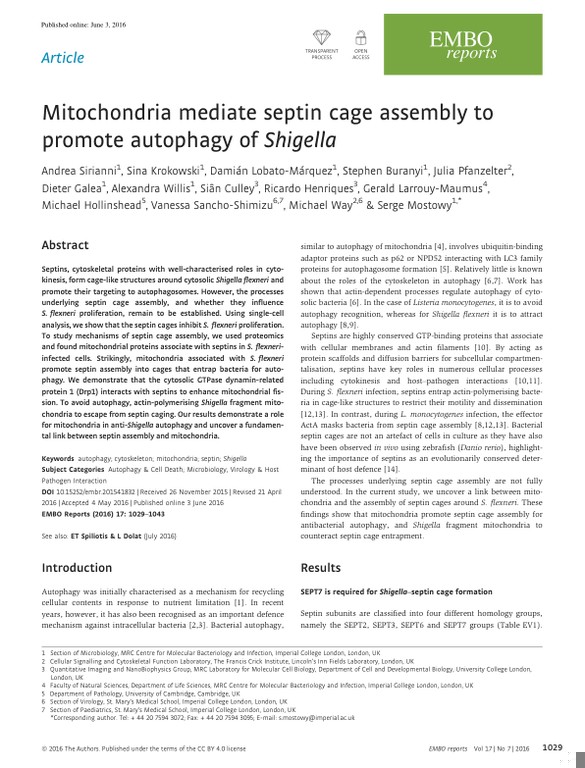Mitochondria mediate septin cage assembly to promote autophagy of Shigella
Paper published in EMBO reports, January 2016

The manuscript by Sirianni et al. (2016) explores the relationship between septins, mitochondria, and Shigella infection. The study reveals that septin cages, formed around Shigella bacteria, inhibit their proliferation by suppressing metabolic activity. Mitochondria contribute to septin cage assembly, which leads to bacterial entrapment for autophagy. Conversely, Shigella utilizes the cytosolic GTPase dynamin-related protein 1 (Drp1) to fragment mitochondria, evading septin cage entrapment. The findings underscore the significance of mitochondria in anti-Shigella autophagy and shed light on the connection between septin assembly and mitochondria. The research employed techniques such as single-cell analysis, proteomics, and various microscopy methods.